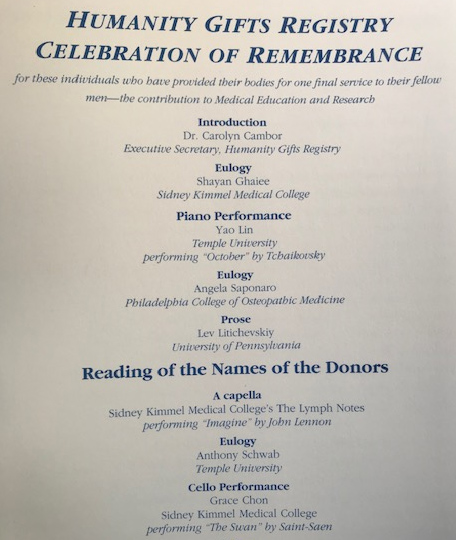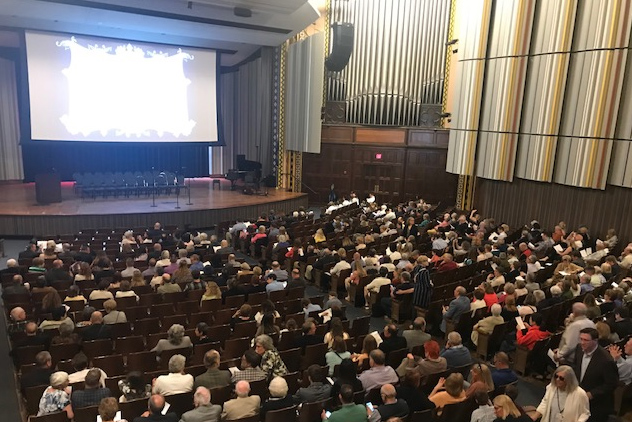Celebration of Remembrance

April 30, 2019
Many of you know that I just joined the College of Medicine family in September, so it took me a while to get used to the campus and find my way through Queen Lane. And while I could almost always never find a colleague's office, I never failed to stumble into the cadaver lab by accident. Frustrated, I would backtrack my way out and try to find the office I was looking for. That was the only thought I had ever gave to the cadaver lab—that is, until my mom passed away in early January and my siblings and I had to talk about organ donation. Unfortunately, my mom battled with a lot of infections in her last days, so her organs were rendered unusable. However, it made me think back to my stumbles through the cadaver lab. Unlike me, those bodies did not happen to be in the lab by accident. They were purposely donated by the deceased and/or their family members so that even in their death, their legacy lived on to educate future doctors, dentists and other health care providers in our country.
When the invitation to attend the Annual Celebration of Remembrance crossed my desk, I decided to attend along with many first-year students from medical, dental, podiatry and osteopathic schools in Pennsylvania. The Celebration of Remembrance is held each year in Philadelphia and Pittsburgh. Family and friends of the donors are invited to "honor and commemorate these special individuals who have selflessly donated their bodies for the advancement of medical education and research." Medical students and faculty members from Pennsylvania schools also participate in the celebration.

Annual Celebration of Remembrance in Philadelphia
Despite it being exam time for many of the students, these first-year students donned their white coats and came in droves to fill the balcony section of the Irvine Auditorium. It was a touching sight. As I looked down onto the orchestra section, I saw many of the donors' friends and families arrive. They too came in droves and packed the house for this very special performance.
The service was short but well-thought out and meaningful. Several students had the opportunity to eulogize their cadavers by sharing stories of the many lessons these "teachers-of-sorts" taught them over the past year or so. A few paid tribute through song or music. It was amazing to see the talent that lies in this next generation of health care providers. Then each of the donors' names were read (a few Drexel students served as readers), and a flower was offered in their name. It was a solemn occasion but not somber by any means. It was truly a celebration of an amazing legacy.
As I exited the building, I saw a few more Drexel students getting ready to head back to campus to hit the books yet again, but all told me that they wouldn't have missed this celebration for anything because their cadaver was one of the best teachers they had ever had.
To learn more about being a donor visit the Humanity Gifts Registry.
Issa DiSciullo
Director of Diversity, Equity & Inclusion
Back to Top